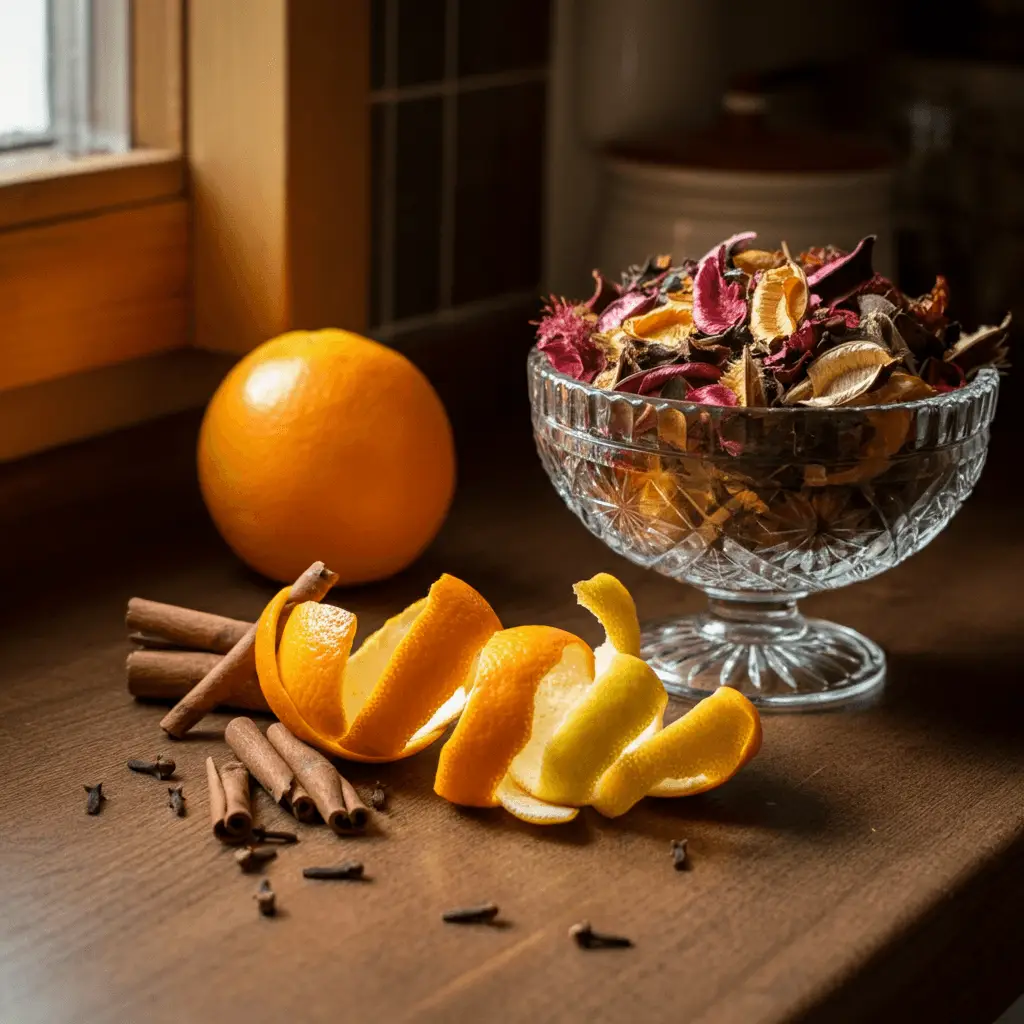Repurposing everyday items into something functional and beautiful is at the heart of homesteading and backyard farming. One simple yet impactful project you should try is making homemade potpourri using citrus fruit peels. Not only is this approach eco-friendly, but the vibrant scents created with citrus peels can invigorate any space without the use of chemicals. Plus, it’s a perfect way to reuse kitchen scraps.
This guide will walk you through the benefits of using citrus peels in a potpourri bowl, the materials needed, preparation methods, and creative display ideas to enhance your home naturally.
Why Choose Citrus Peels for Potpourri?
A Natural Fragrance for Your Home
Citrus peels, whether from oranges, lemons, limes, or grapefruits, offer a fresh, zesty aroma that instantly uplifts a room. When combined with complementary spices like cinnamon or cloves, citrus-based potpourri creates a warm and inviting atmosphere.
Eco-Friendly Reuse of Kitchen Waste
Instead of tossing leftover peels into the trash, turning them into potpourri reduces waste and gives them a new purpose. It’s a small but meaningful step toward sustainable living, making it a favorite project among homesteaders.
Chemical-Free Air Freshener
Store-bought air fresheners often contain artificial chemicals that can irritate sensitive noses or harm the air quality in your home. Homemade potpourri offers an all-natural alternative that smells great and keeps potentially harmful substances out of your living space.
Materials You’ll Need
Creating your own bowl potpourri doesn’t require specialized equipment—you probably already have most of the necessary materials at home.
1. Citrus Peels
- Oranges
- Lemons
- Limes
Collect fresh peels from your weekly fruit consumption. The wider the variety of citrus, the more dynamic the fragrance profile.
2. Additional Ingredients
- Spices:
- Cinnamon sticks
- Whole cloves
- Nutmeg
- Optional enhancements:
- Essential oils (such as lavender, eucalyptus, or vanilla)
- Dried botanicals like lavender buds or rose petals
3. Potpourri Containers
- Crystal potpourri bowls for an elegant look
- Decorative ceramic or wooden bowls for a rustic touch
How to Make Potpourri with Citrus Peels
Choose between two methods depending on your preferences—stovetop potpourri for an immediate aroma or dehydrated potpourri for a longer-lasting scent that doubles as home décor.
Method 1: Stovetop Potpourri
Step 1. Gather Fresh Citrus Peels
Use fresh peels and wash them thoroughly to remove any pesticide residue.
Step 2. Combine Ingredients in a Pot
- Add the citrus peels.
- Toss in your spices—about 3–5 cinnamon sticks, 1 tablespoon of cloves, and a dash of nutmeg.
- You can include a few drops of essential oil for added warmth.
Step 3. Simmer on Low Heat
Cover the mixture with water and simmer on low heat, allowing the potpourri’s scent to fill your home. Keep an eye on the water level and replenish as necessary to avoid burning the ingredients.
Method 2: Dehydrated Potpourri
Step 1. Prepare Citrus Peels
If you want decorative peels, use a small knife or cookie cutter to shape them into stars, circles, or hearts.
Step 2. Dry the Peels
Arrange the peels in a single layer on a cookie sheet. Air-dry them at room temperature for several days or speed up the process with a dehydrator. You can also use an oven set to its lowest temperature (around 120°F to 150°F).
Step 3. Mix with Other Elements
Combine your dried citrus peels with spices (like cinnamon sticks and cloves), dried flowers, or even small pine cones.
Step 4. Store and Cure
Place the mixture in a sealed container for a few days to allow the aromas to mingle and intensify. Shake the container gently to mix everything.
Displaying Your Potpourri
Once your homemade potpourri is ready, it’s time to showcase it in your favorite spots around the house.
Choosing the Perfect Bowl
- Use crystal potpourri bowls for spaces requiring a touch of elegance, like dining tables or entryways.
- For a cozy, rustic vibe, opt for ceramic or handmade wooden bowls.
Where to Place Potpourri Bowls
- Living Rooms: A coffee table centerpiece can add warmth and character to your sitting space.
- Bathrooms & Bedrooms: Introduce a refreshing scent to these intimate areas.
- Entryways & Mudrooms: Welcome guests with an inviting fragrance right as they walk in.
Keeping Your Potpourri Fresh
Occasionally stir the contents of your potpourri bowl to release fresh scents. If the fragrance starts to fade, replenish it by adding a few more drops of essential oil or mixing in newly dried citrus peels.
Seasonal Potpourri Bowl Ideas
Make your potpourri unique by incorporating seasonal elements into your blends.
Spring & Summer
- Add dried lavender or mint leaves for a bright, herbal aroma.
- Use peels from in-season fruits like grapefruits or mandarins.
Fall & Winter
- Incorporate dried apple slices or cranberries for a cozy, autumnal twist.
- Sprinkle in nutmeg or pumpkin spice for holiday warmth.
Perfect for Gifting
Homemade potpourri makes an excellent gift for friends and family.
- Packaging Ideas: Use decorative bowls or sachets tied with ribbons.
- Customization: Design personalized blends tailored to the recipient’s favorite scents or season.
Takeaway
Crafting homemade potpourri with citrus fruit peels blends practicality with creativity. You’re not just making your home smell amazing—you’re also practicing sustainability and adding a personal touch to your space or gifts. Whether you choose to simmer a stovetop potpourri or lovingly create a dehydrated version for display, this project is a rewarding experience.
Indulge your homesteading spirit, and breathe life into your home with all-natural, DIY potpourri.
